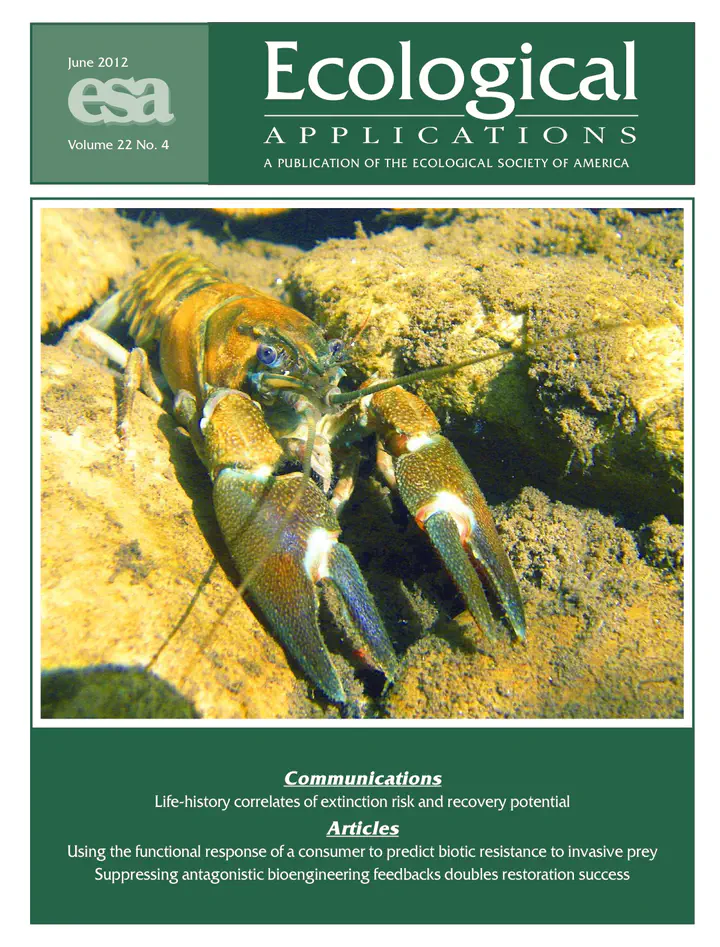Using the functional response of a consumer to predict biotic resistance to invasive prey

Abstract
Predators sometimes provide biotic resistance against invasions by nonnative prey. Understanding and predicting the strength of biotic resistance remains a key challenge in invasion biology. A predator’s functional response to nonnative prey may predict whether a predator can provide biotic resistance against nonnative prey at different prey densities. Surprisingly, functional responses have not been used to make quantitative predictions about biotic resistance. We parameterized the functional response of signal crayfish (Pacifastacus leniusculus) to invasive New Zealand mud snails (Potamopyrgus antipodarum; NZMS) and used this functional response and a simple model of NZMS population growth to predict the probability of biotic resistance at different predator and prey densities. Signal crayfish were effective predators of NZMS, consuming more than 900 NZMS per predator in a 12‐h period, and Bayesian model fitting indicated their consumption rate followed a type 3 functional response to NZMS density. Based on this functional response and associated parameter uncertainty, we predict that NZMS will be able to invade new systems at low crayfish densities (<0.2 crayfish/m2) regardless of NZMS density. At intermediate to high crayfish densities (>0.2 crayfish/m2), we predict that low densities of NZMS will be able to establish in new communities; however, once NZMS reach a threshold density of ∼2000 NZMS/m2, predation by crayfish will drive negative NZMS population growth. Further, at very high densities, NZMS overwhelm predation by crayfish and invade. Thus, interacting thresholds of propagule pressure and predator densities define the probability of biotic resistance. Quantifying the shape and uncertainty of predator functional responses to nonnative prey may help predict the outcomes of invasions.